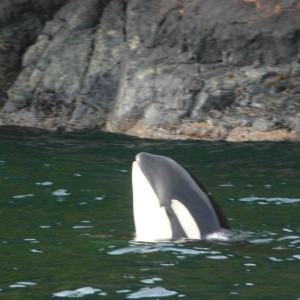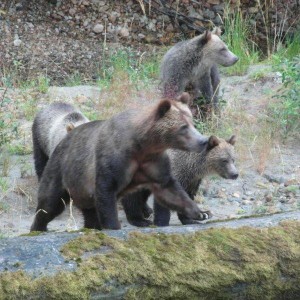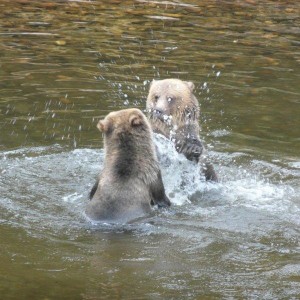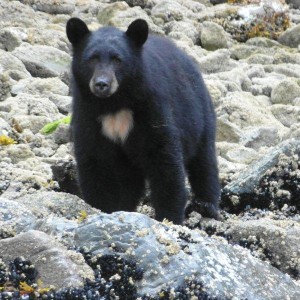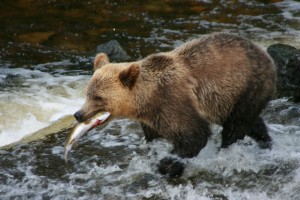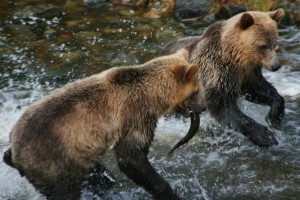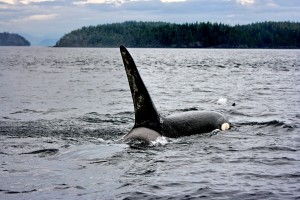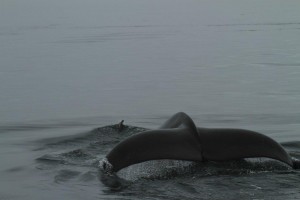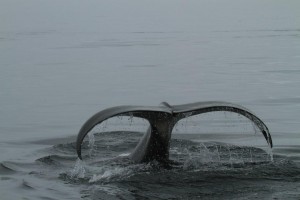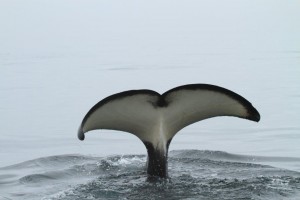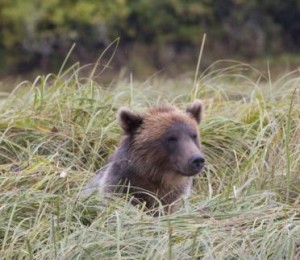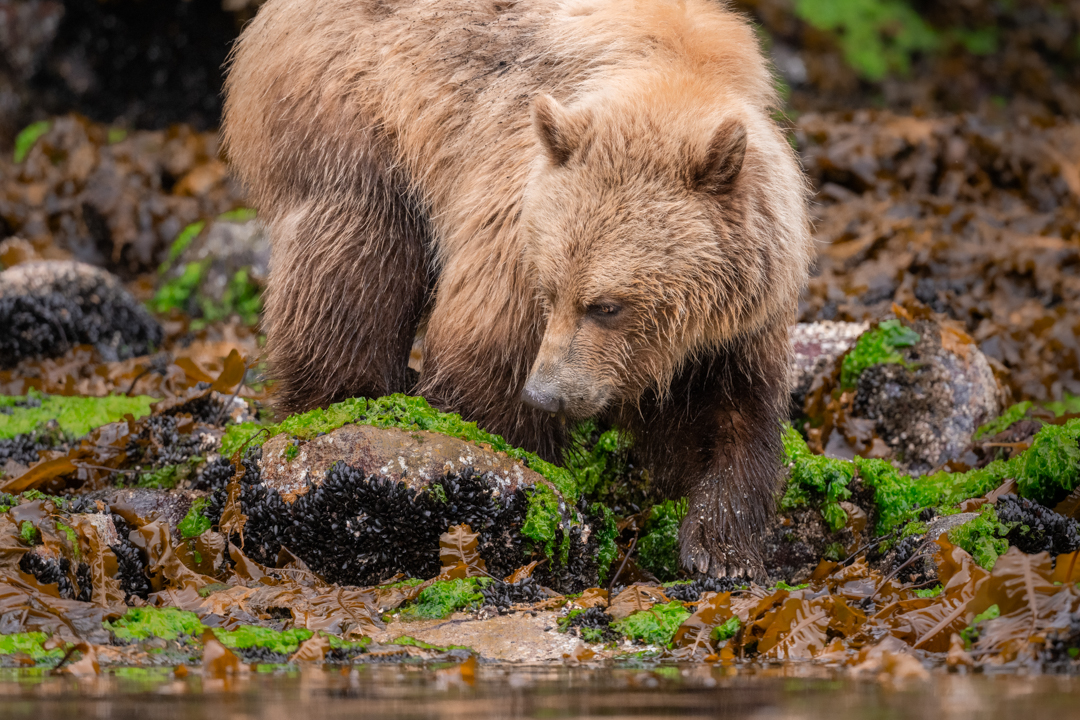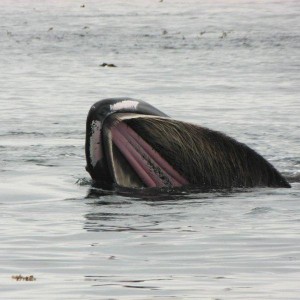
On the whale watching tour from Grizzly Bear Lodge we are fortunate to view between eight and sixteen different humpback whales each trip. These whales spend their summer in our area feeding on the herring, which provides our guests with ample opportunities to watch them lunge feeding. In a lunge the humpbacks come up beneath a herring ball with mouths open as shown in James Kastelein’s photo. The baleen shown is a row of a large number of keratin plates attached to the upper jaw. These plates have a composition similar to those in human hair or fingernails. They are triangular in section with the largest, inward-facing side bearing fine hairs, which form a filtering mat. The humpback whale has about 330 pairs of dark gray baleen plates with coarse gray bristles hanging from the jaws. They are about 0.6 m (25 inches) long and 34 cm (13.5 inches) wide.
